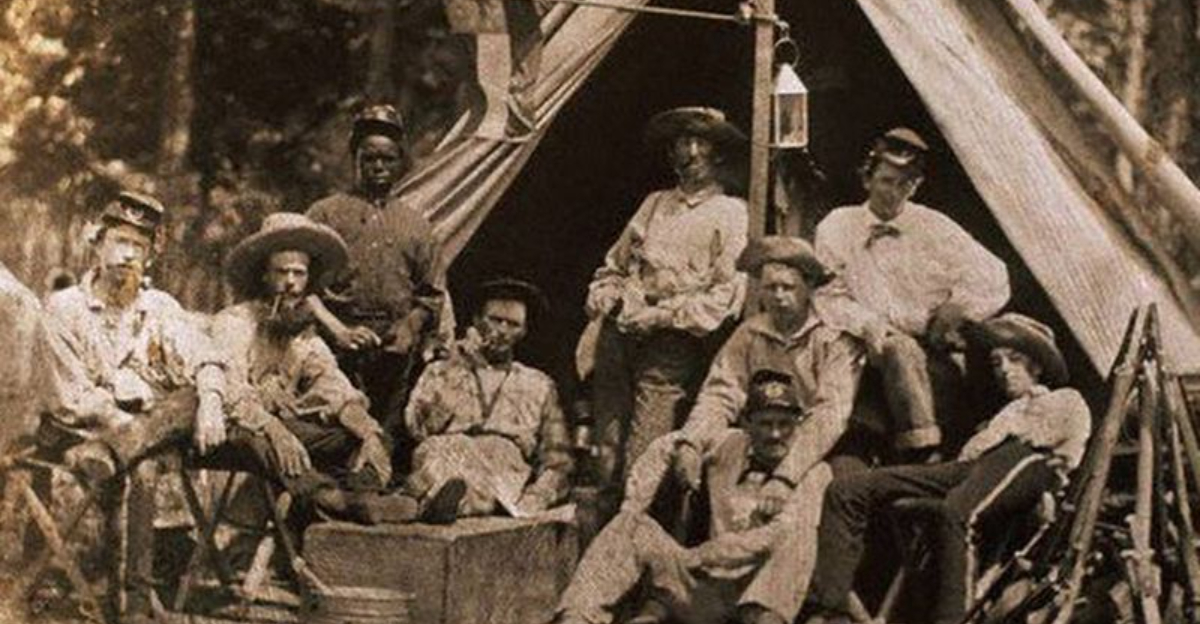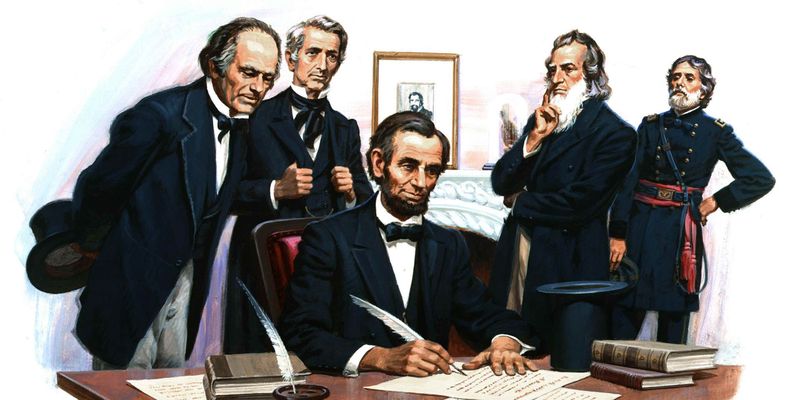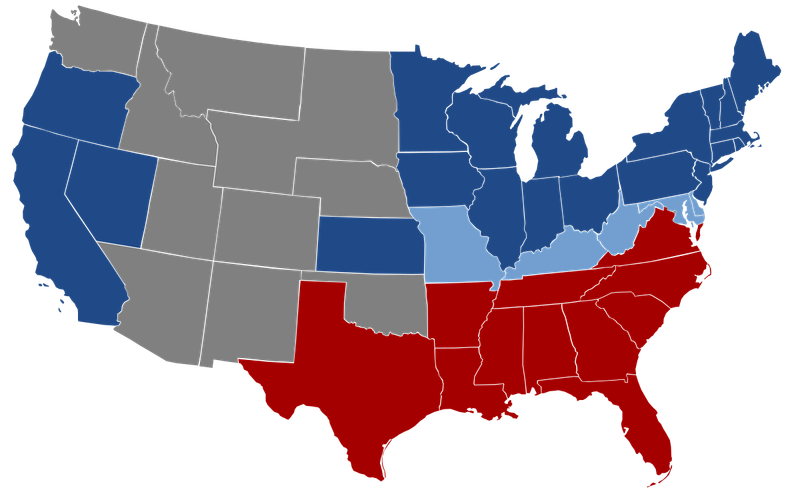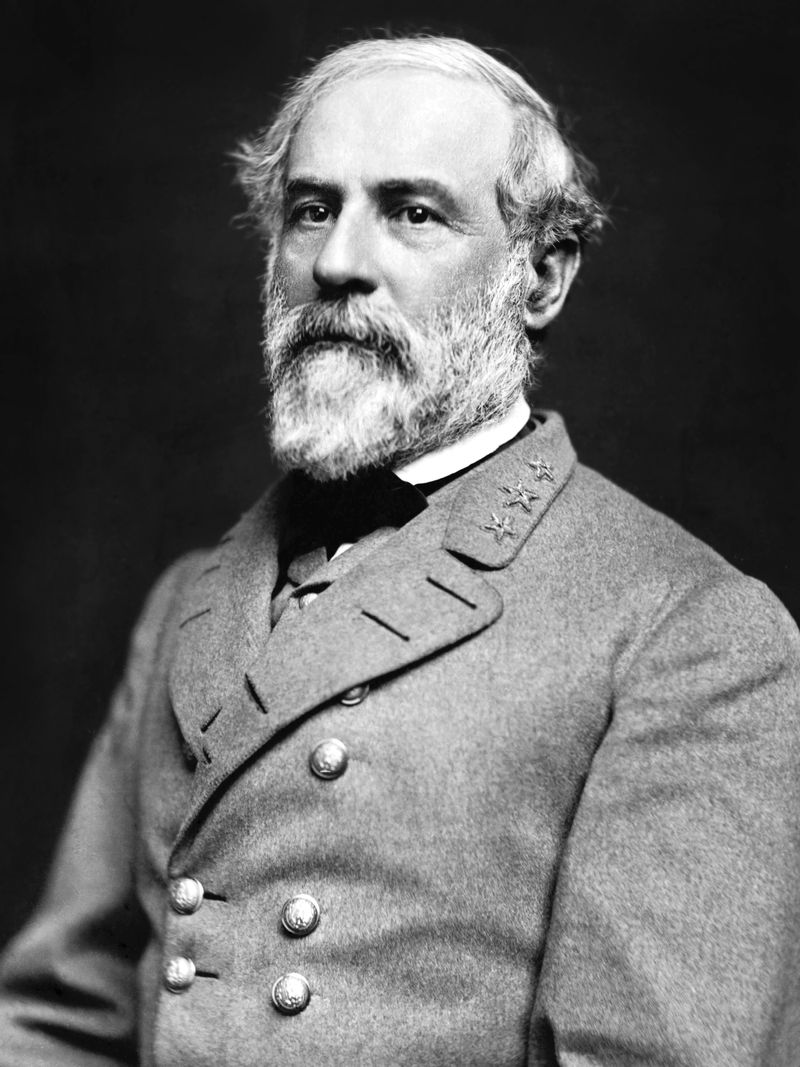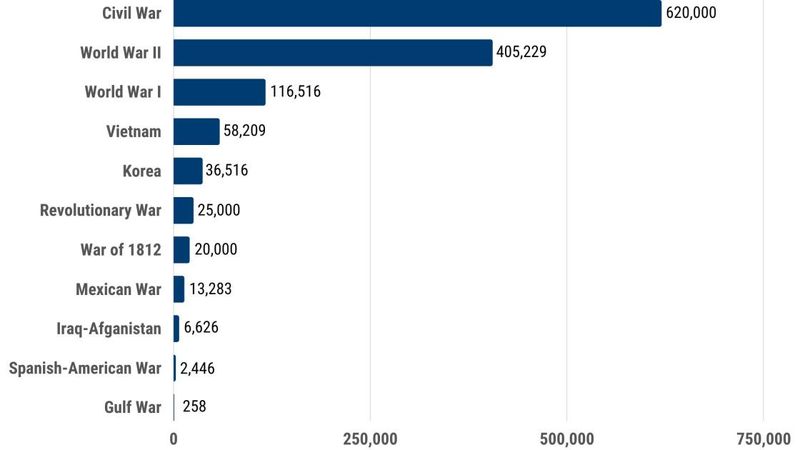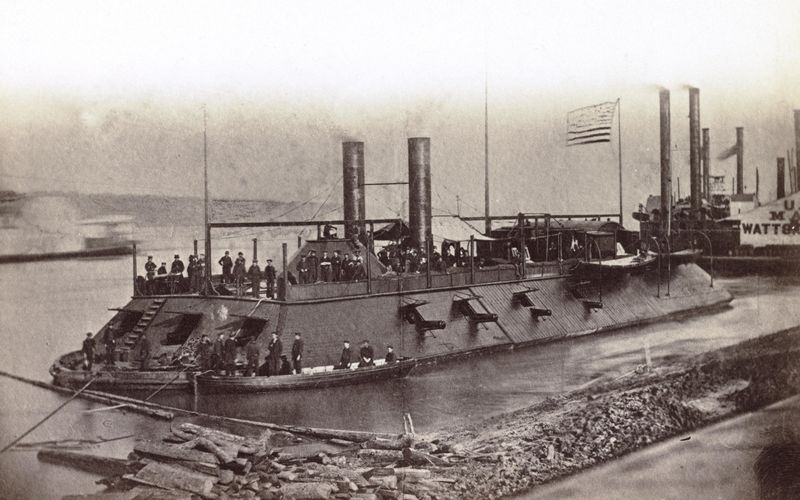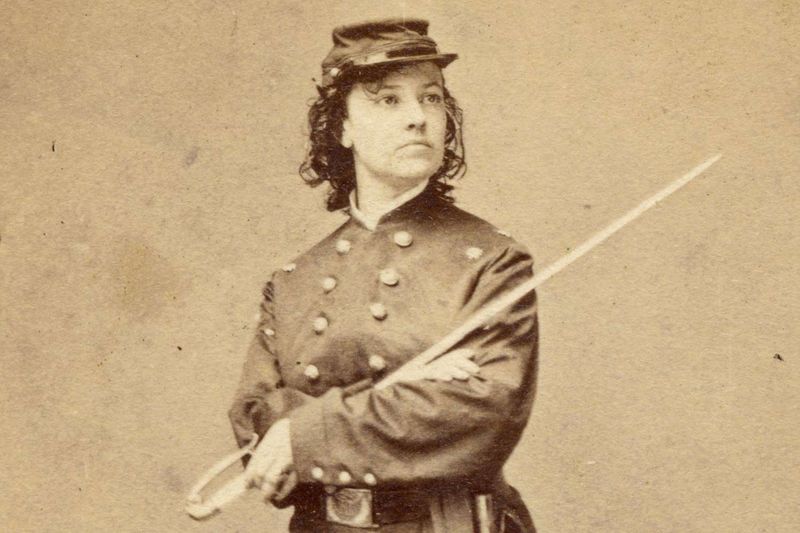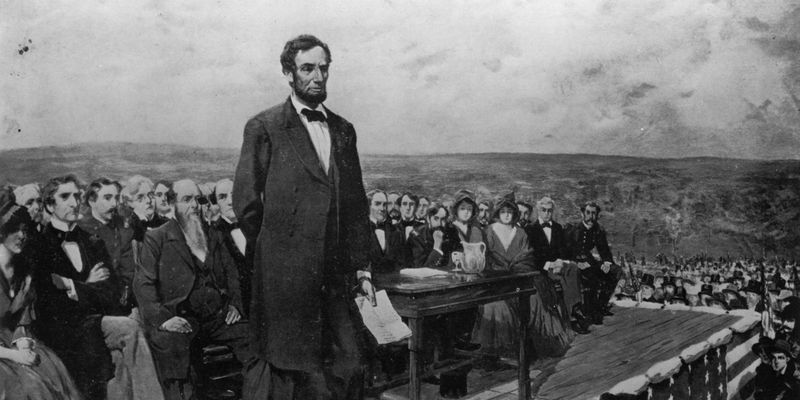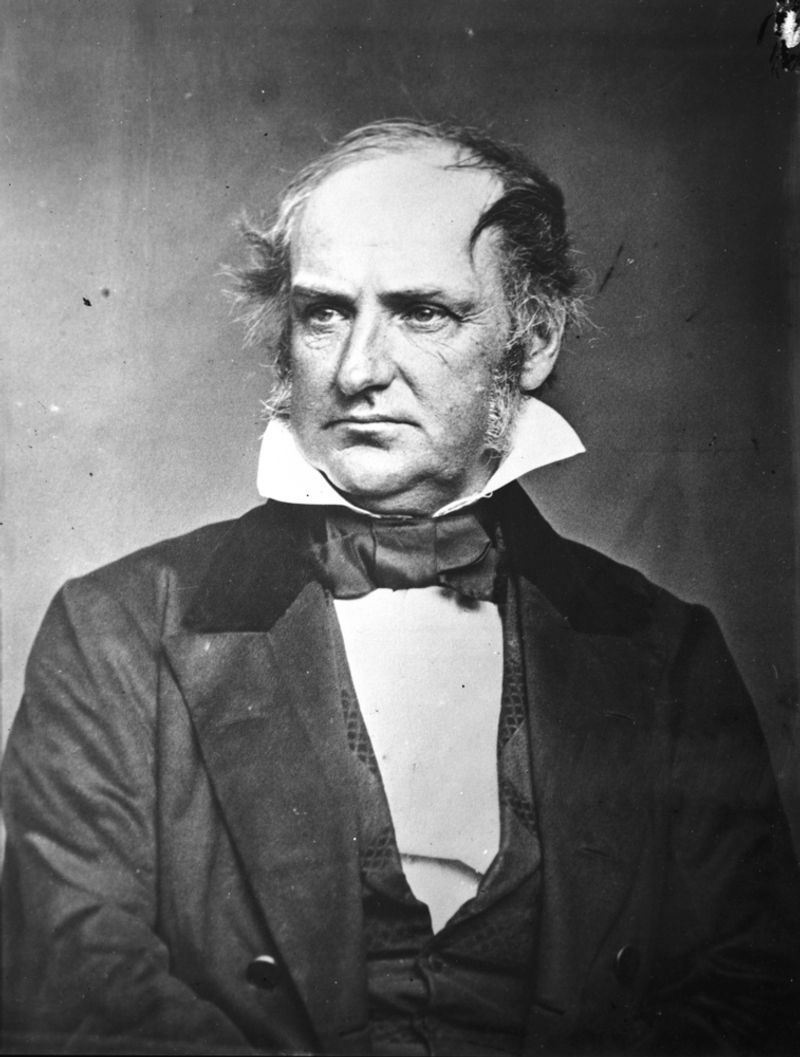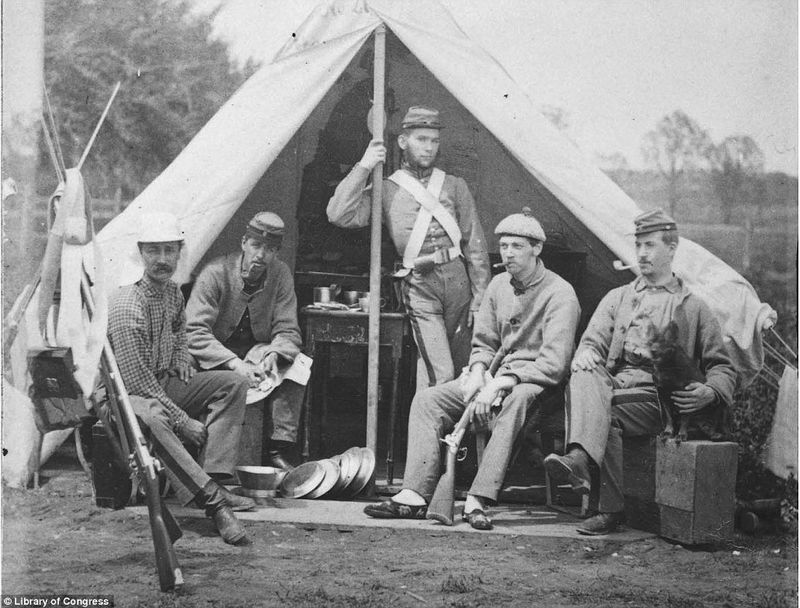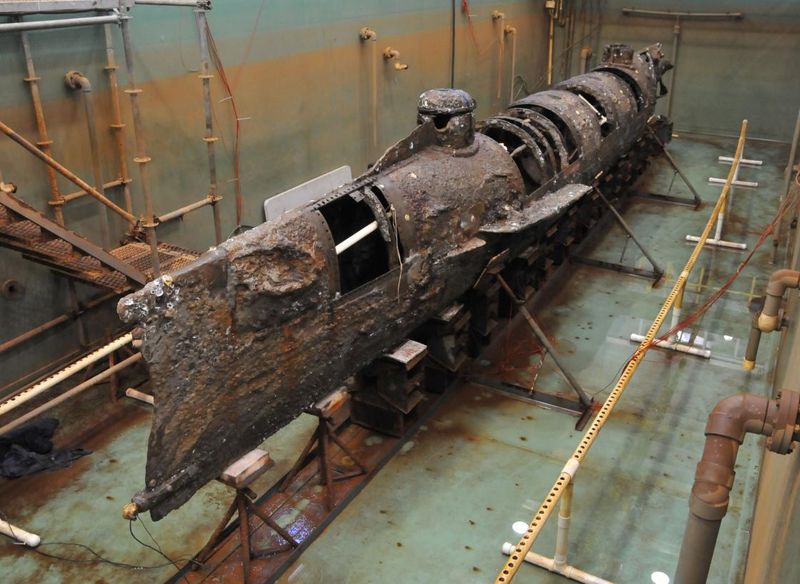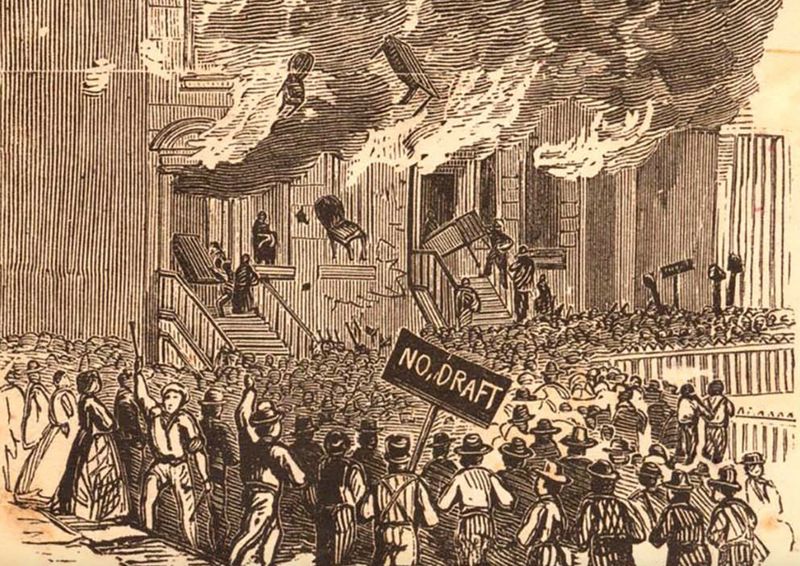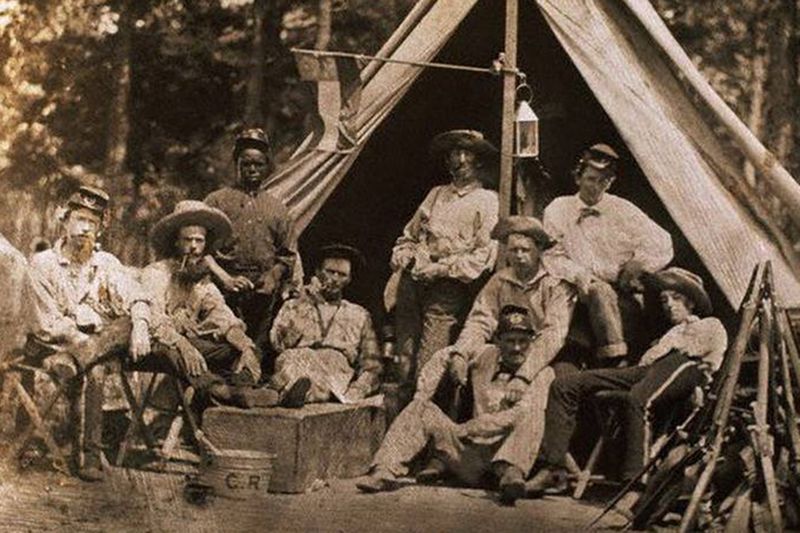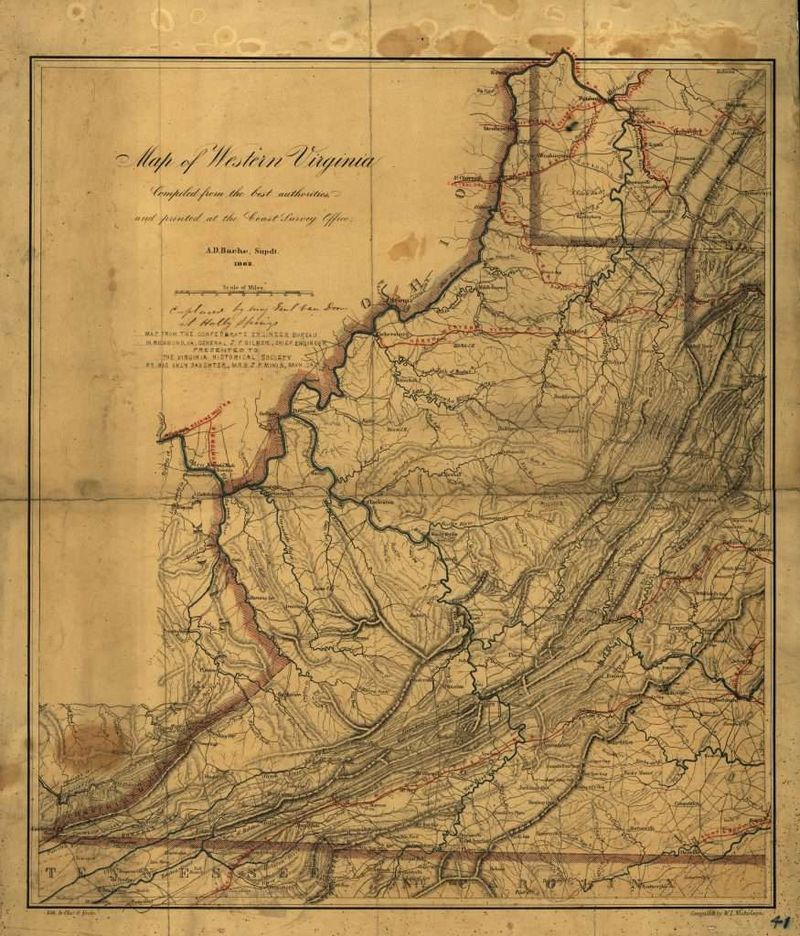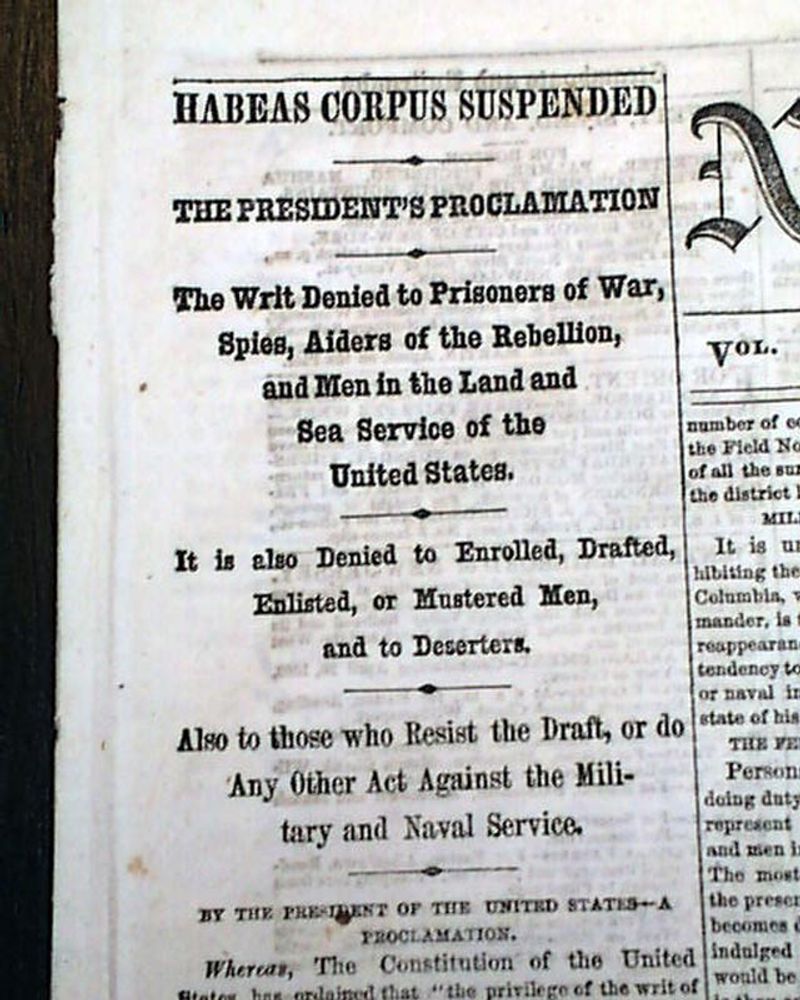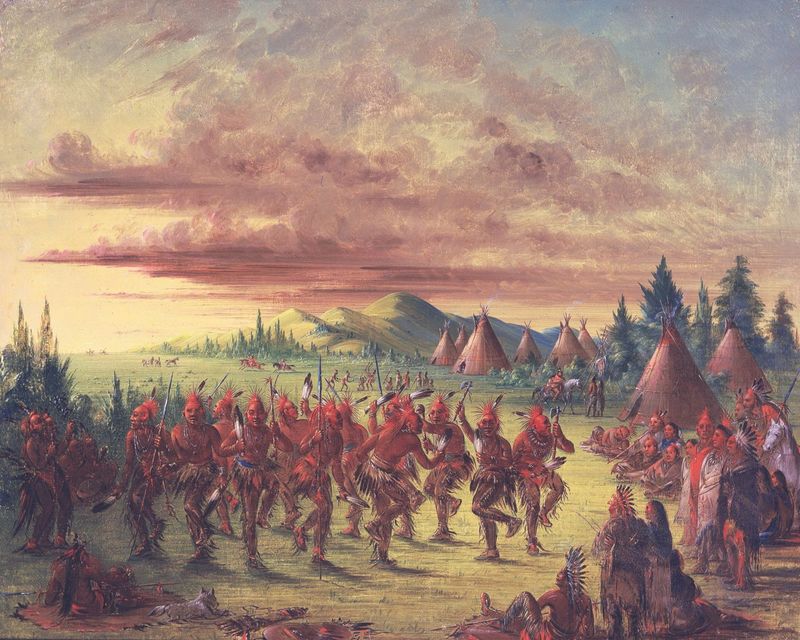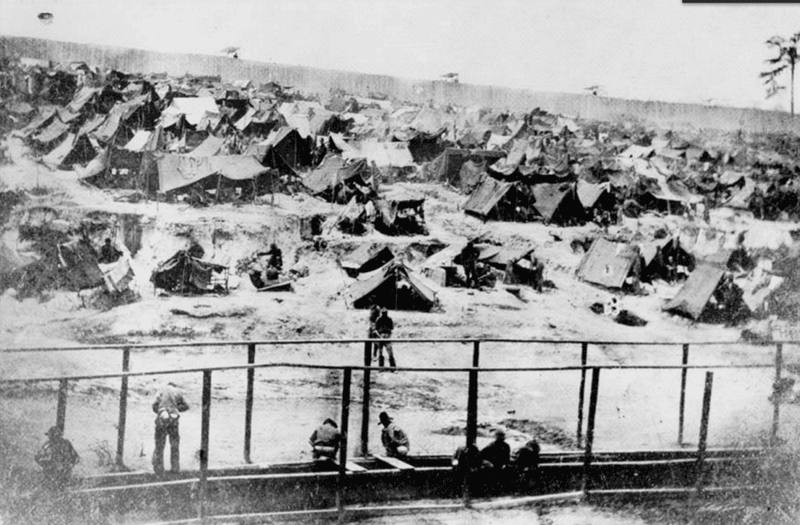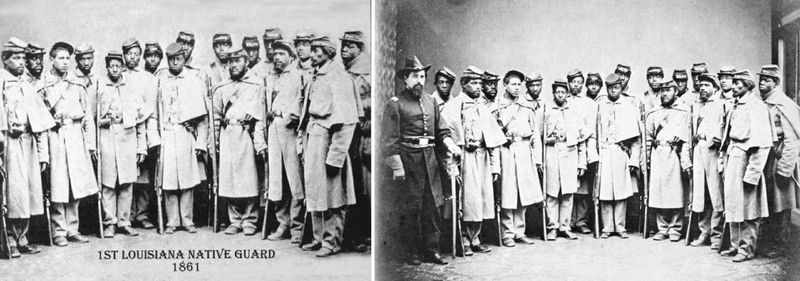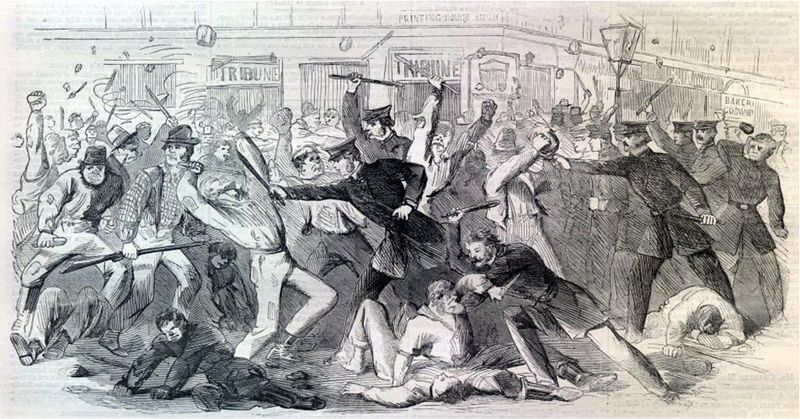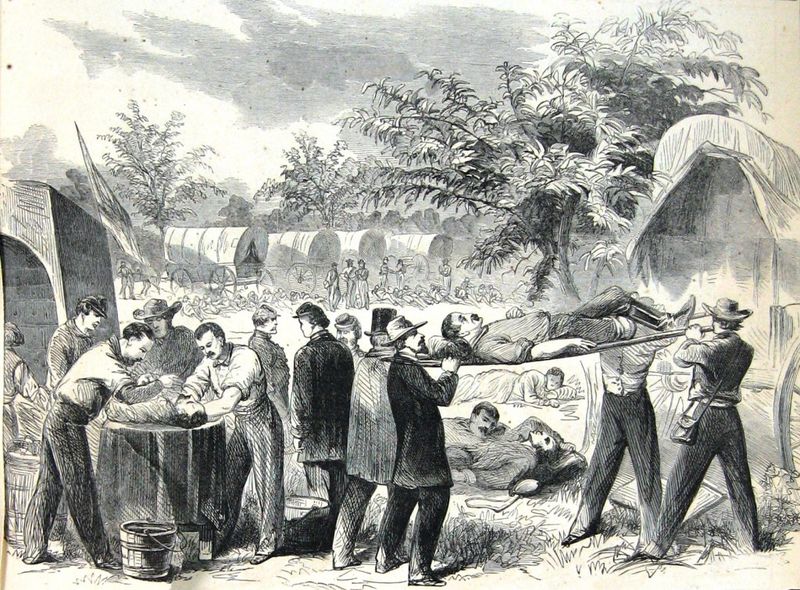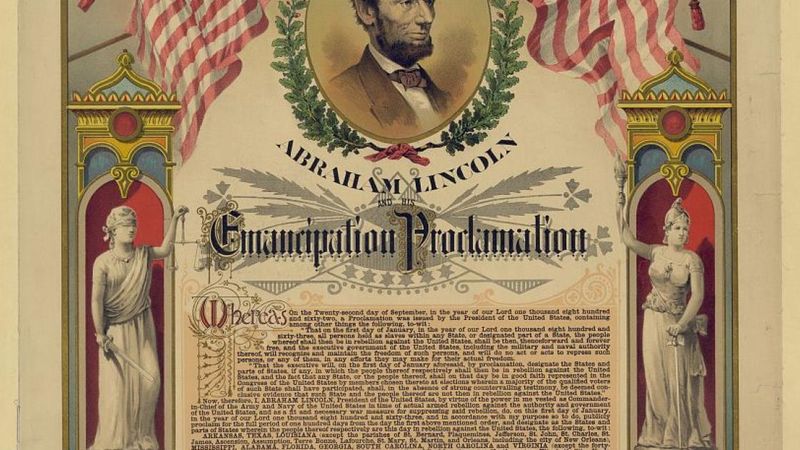The American Civil War is a period shrouded in mythology and misunderstanding. While many think they know the basics, the truth is far more nuanced and surprising. From unexpected alliances to technological innovations, these facts challenge popular perceptions and highlight the complexity of a war that defined a nation. Dive into this list of 21 astonishing Civil War facts that will turn everything you thought you knew upside down.
1. Lincoln Didn’t Initially Fight to End Slavery
Abraham Lincoln’s primary objective as the Civil War began was not the abolition of slavery, but the preservation of the Union. This stance shifted drastically with the issuance of the Emancipation Proclamation in 1863. Initially, Lincoln was hesitant to address slavery, fearing it might alienate the border states. However, as the war progressed, freeing the slaves became both a moral imperative and a strategic maneuver to weaken the Confederacy. His evolving views are a testament to the complexities of leadership during one of America’s most turbulent times.
2. Four Slave States Fought for the Union
Contrary to what many believe, not all slaveholding states joined the Confederacy. Delaware, Maryland, Kentucky, and Missouri remained loyal to the Union. These states, known as border states, played crucial roles in the Union’s strategy. Their geographical location and resources were vital assets. The loyalty of these states helped ensure the Union’s eventual victory, showcasing the complex loyalties and divided sentiments during the Civil War. Their decision to remain with the North highlights the multifaceted nature of the war.
3. Robert E. Lee Opposed Secession
Robert E. Lee is synonymous with the Confederate Army, yet he personally opposed both secession and slavery. A loyal Virginian, Lee accepted command of the Confederate forces out of allegiance to his home state rather than the Confederacy itself. His internal conflict underscores the personal and moral dilemmas faced by many during the Civil War. Despite his reservations, Lee became one of the most respected generals, demonstrating the complexity of human motives in times of war.
4. The Civil War Was America’s Bloodiest Conflict
The Civil War remains the deadliest conflict in American history, with estimates ranging between 620,000 and 750,000 fatalities. This staggering number surpasses the combined American losses in World War I, World War II, the Korean War, and the Vietnam War. The high casualties were due in part to outdated tactics clashing with modern technology, such as rifles and artillery. The war’s brutality left scars on the nation, both physically and emotionally, shaping the American consciousness for generations.
5. The War Gave Rise to Modern Warfare
The Civil War was a precursor to modern warfare, introducing innovations such as trench warfare, repeating rifles, ironclad warships, and the use of railroads and telegraphs. These advancements changed the nature of combat, making it more deadly and complex. The war also saw the first widespread use of photography, which brought the grim reality of battle to the public in an unprecedented way. The technological leaps made during the Civil War set the stage for future conflicts and reshaped military strategy.
6. Women Were Combatants and Spies
Women played critical roles in the Civil War, often disguising themselves as men to fight on the front lines. Figures like Harriet Tubman and Belle Boyd became renowned spies, gathering crucial intelligence for their respective sides. These women defied traditional gender roles, taking on dangerous missions with courage and ingenuity. Their stories reflect the broader struggles and contributions of women during the war, challenging the era’s gender norms and showcasing their vital impact on history.
7. The Gettysburg Address Was Less Than 3 Minutes Long
Lincoln’s Gettysburg Address, delivered in November 1863, is one of the most famous speeches in American history. Remarkably, it lasted less than three minutes and contained just 272 words. Despite its brevity, the address eloquently captured the essence of the nation’s struggle and the ideals of liberty and equality. Initially, many in the audience found the speech too short, but its enduring significance has since become clear. The Gettysburg Address remains a powerful reminder of the war’s purpose and legacy.
8. A Sitting U.S. Senator Died in Battle
Edward Baker, a U.S. senator from Oregon, was a close friend of Abraham Lincoln and a fervent Union supporter. In 1861, he led troops at the Battle of Ball’s Bluff and became the only sitting senator to die in combat. His death was a stark reminder of the war’s reach and its capacity to touch even the highest levels of government. Baker’s legacy is emblematic of the personal sacrifices made by many during the Civil War, reflecting the high stakes of the conflict.
9. Photography Changed the War’s Legacy
The Civil War was the first major conflict to be extensively photographed, forever changing public perception of war. Photographers like Mathew Brady and Alexander Gardner documented the harsh realities of battle, capturing haunting images of dead soldiers and ravaged landscapes. These photos brought the war’s brutality into the homes of everyday Americans and served as powerful reminders of the cost of conflict. The visual legacy left by Civil War photographers continues to shape our understanding of the era.
10. There Were Civil War Submarines
The Confederate H.L. Hunley was the world’s first combat submarine to successfully sink an enemy ship. In 1864, it attacked the USS Housatonic in Charleston Harbor. However, the Hunley also sank shortly after its mission, leading to the loss of its crew. This daring innovation marked a significant development in naval warfare, highlighting the lengths to which both sides went to gain an advantage. The Hunley’s story is a testament to the creativity and risks involved in wartime invention.
11. Draft Riots Rocked the North
In July 1863, New York City erupted in violent riots following the introduction of a new draft law. Many immigrants, particularly the Irish, were outraged by the conscription, which they saw as unfair and discriminatory. The protests quickly escalated into deadly clashes, with mobs targeting African Americans and affluent citizens. These riots exposed deep societal tensions and highlighted the war’s unpopularity in some Northern areas. The draft riots remain a sobering reminder of the domestic challenges faced during wartime.
12. Many Confederate Soldiers Weren’t Slave Owners
Despite fighting for a cause that supported slavery, most Confederate soldiers did not own slaves. Many were poor farmers and laborers who joined the army to defend their homes and way of life. This fact underscores the complex motivations and social structures within the Confederacy. The soldiers’ participation was often driven by loyalty to their states rather than the preservation of slavery. This reality complicates the traditional narrative and offers insight into the diverse experiences of those who fought in the Civil War.
13. West Virginia Was Born During the War
In the midst of the Civil War, the state of West Virginia was formed in 1863, breaking away from Confederate Virginia. This division was fueled by political and social differences between the Appalachian region and the rest of Virginia. West Virginia’s creation as a Union state showcased the internal conflicts within the Confederacy and the shifting allegiances during the war. Its birth during such turbulent times represents the dynamic nature of national identity and statehood in a fractured America.
14. Lincoln Suspended Habeas Corpus
During the Civil War, President Lincoln took the controversial step of suspending habeas corpus, allowing for the detention of individuals without trial. This measure was aimed at curbing dissent and maintaining order, particularly in border states. Lincoln’s decision sparked significant debate over civil liberties and executive power. The suspension of habeas corpus remains one of the most debated actions of his presidency, reflecting the balancing act between security and freedom in times of national crisis.
15. Some Native American Tribes Fought for the Confederacy
Certain Native American tribes, including the Cherokee, aligned with the Confederacy during the Civil War. These tribes hoped that supporting the South would lead to greater autonomy and favorable treatment. Ironically, some tribes had also practiced slavery, complicating their motives. The alliances formed by Native American tribes highlight the diverse interests and strategies at play during the conflict. Their involvement sheds light on the broader geopolitical and cultural dynamics that influenced the war’s outcome.
16. There Were Civil War Prisons as Brutal as Any Dungeon
Andersonville Prison in Georgia was notorious for its brutal conditions, housing Union prisoners of war in overcrowded, unsanitary camps. Tens of thousands of soldiers suffered from disease, malnutrition, and exposure. The prison’s commander, Henry Wirz, was later executed for war crimes. Andersonville stands as a grim reminder of the war’s inhumanity and the suffering endured by countless soldiers. The horrors of Civil War prisons underscore the broader human cost of the conflict and its lasting scars on those who lived through it.
17. Not All Confederates Were White
While the Confederacy is often associated with white supremacy, not all its supporters were white. A small number of free Black men and mixed-race individuals supported the South, often due to personal survival or complex local loyalties. Many were coerced or manipulated into service, while others believed the Confederacy might offer them better prospects. This surprising fact highlights the intricate social dynamics and personal motivations that influenced allegiances during the Civil War, challenging simplistic narratives about the conflict.
18. Soldiers Could Literally Buy Their Way Out of War
In the Union, men could pay a $300 commutation fee or hire a substitute to avoid being drafted into military service. This policy sparked outrage, especially among the poor, who couldn’t afford such sums. The practice highlighted class disparities and fueled resentment, contributing to unrest like the New York City draft riots. The ability to buy one’s way out of service underscores the economic inequalities and societal tensions of the era, offering insight into the broader challenges faced during the Civil War.
19. Civil War Amputations Were Performed in Minutes
With the absence of antibiotics and limited anesthesia, Civil War surgeons faced daunting challenges. Battlefield amputations were often performed in under 10 minutes to save lives. Despite the speed, many soldiers succumbed to infections and complications. These gruesome operations were a harsh reality for thousands, reflecting the brutal conditions and medical limitations of the time. The necessity and frequency of amputations during the war underscore the human cost of conflict and the resilience of those who endured such trauma.
20. The War Didn’t End Slavery in All of the U.S.
The Emancipation Proclamation of 1863 declared freedom for slaves in Confederate territories, but it did not apply to Union slave states. Slavery persisted in places like Kentucky and Delaware until the adoption of the 13th Amendment in 1865. This fact highlights the complexity of emancipation and the uneven path to abolition. The limitation of the Proclamation reveals the strategic and political considerations in Lincoln’s policy, reflecting the gradual and contested process of ending slavery in America.
